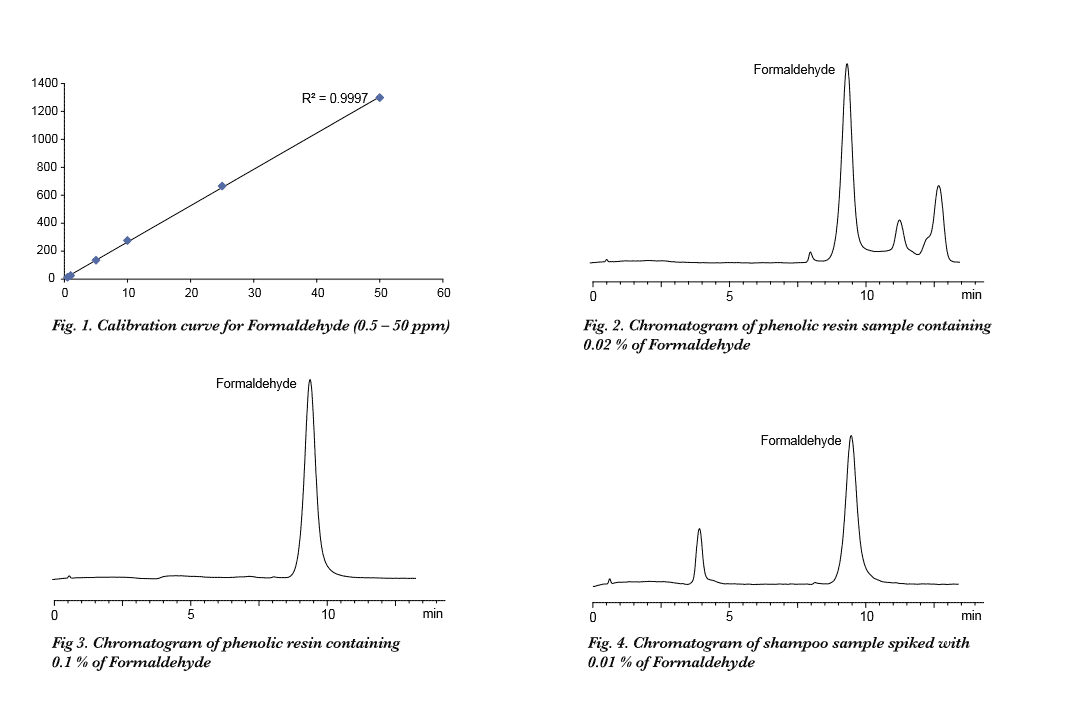MA 325 / ANALYSIS OF FORMALDEHYDE
Formaldehyde is widely used in manufacturing of building materials, cars, plywood, polymers, glues and adhesives. It is also commonly used in household items as a preservative and disinfectant. Due to high toxicity and suspected carcinogenicity products are tested to determine free formaldehyde content and ensure the safety of personal care products and other items. Free formaldehyde testing is also important to monitor production of resins and other polymers and to ensure the quality of final materials.
HPLC method with post-column derivatization allows for quantifying free formaldehyde in a wide range of products and materials, from shampoos to emulsion polymers and phenolic resins. The method is simple, selective and very sensitive. Potential interferences are either separated from formaldehyde on HPLC column or don’t react with post-column reagent and so are not interfering with the detection.
METHOD
Analytical Conditions
Column: Waters Atlantis® HILIC Silica, 5 um, 4.6 x 250 mm
Post-Column Conditions
Post-Column System: Pinnacle PCX or Vector PCX
Regent Flow Rate: 0.4 mL/min
Temperature: 40 ̊C
Flow Rate: 0.5 mL/min
Mobile Phase: 15% 0.05 M Ammonium Acetate in water 85% Acetonitrile
Reactor Volume: 0.5 mL
Temperature: 100 ̊C
Reagent: 0.81 M Ammonimn acetate
0.12 M Galcial acetic acid
0.05 M 2, 4-Pentanedione
Detection: FLD λex=412 nm, λem = 510 nm Or UV/Vis 410 nm


